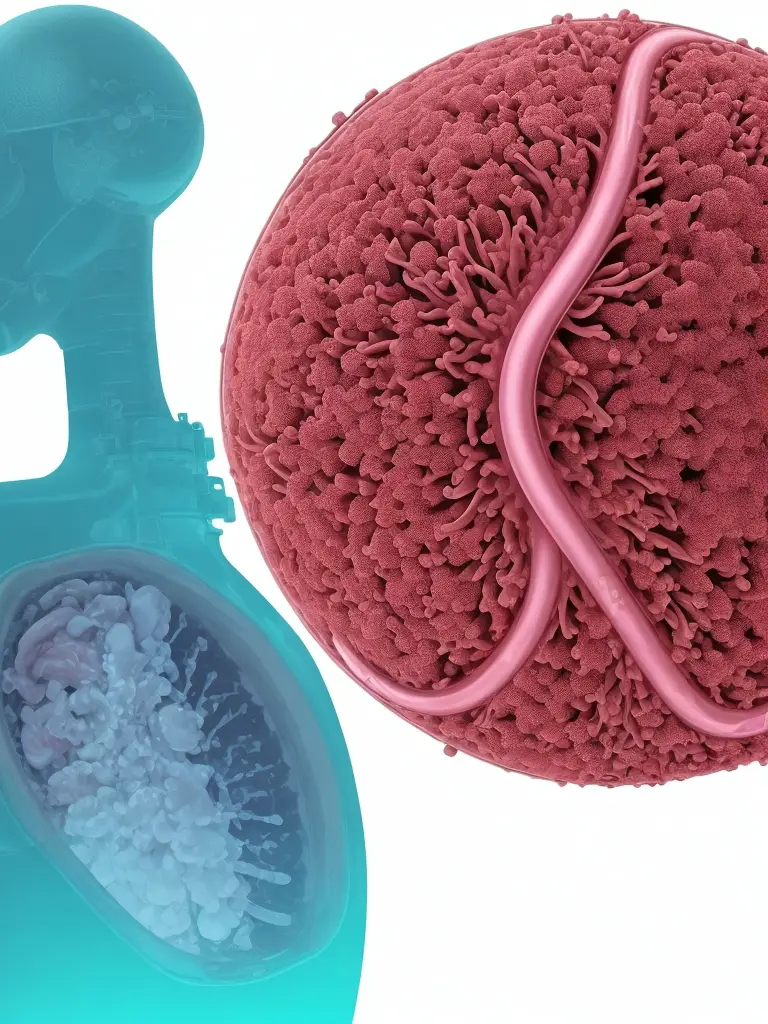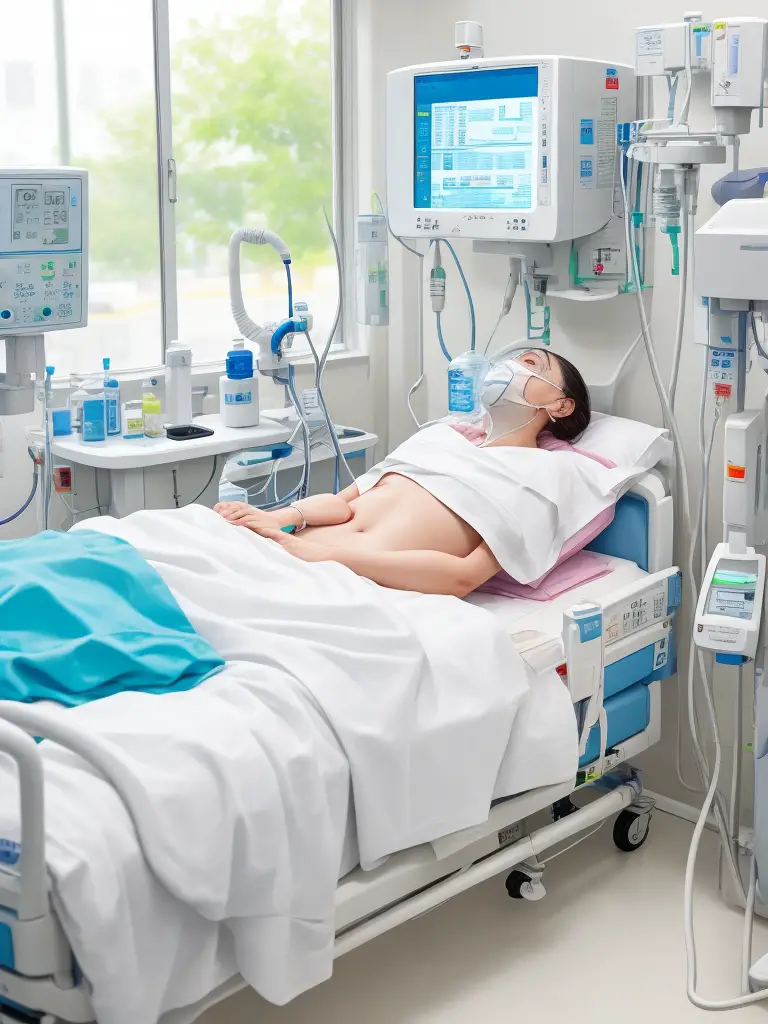Introduction to Respiratory Infection:
Respiratory infections speak to a differing bunch of ailments that influence the respiratory framework, enveloping the upper and lower respiratory tract. These infections can extend from mellow, self-limiting conditions to extreme, life-threatening illnesses, posturing a noteworthy worldwide wellbeing challenge. The respiratory framework, mindful for oxygen trade and the disposal of carbon dioxide, is especially helpless to different irresistible operators, counting infections, microbes, organisms, and parasites.
Respiratory infections can show totally different shapes, such as the common cold, flu, pneumonia, bronchitis, and more. They frequently display with side effects such as hacking, sniffling, shortness of breath, chest inconvenience, and fever. The causative operators shift broadly, with infections like flu, rhinovirus, and coronaviruses being overwhelming, nearby bacterial pathogens such as Streptococcus pneumoniae and Haemophilus influenzae.
These diseases are not kept to a particular statistic or geographic area; they influence individuals of all ages and can spread quickly, driving to flare-ups and pandemics. Components like packing, compromised safe frameworks, and insufficient healthcare framework can worsen the affect of respiratory diseases, particularly in helpless populaces.
Preventive measures, counting immunization, great cleanliness hones, and opportune restorative intercession, play a significant part in controlling the spread of respiratory infections. Understanding the flow of these infections, their modes of transmission, and the components impacting their seriousness is fundamental for creating viable open wellbeing techniques and restorative intercessions.
This presentation sets the organize for investigating the perplexing world of respiratory diseases, digging into their causes, side effects, treatment choices, and the broader suggestions for worldwide wellbeing. As we explore through the complexities of these infections, we pick up bits of knowledge that contribute to the continuous endeavors to relieve their affect and protect open wellbeing around the world.
Table of Contents
causes:
Respiratory diseases can be caused by a assortment of irresistible specialists, counting infections, microbes, parasites, and parasites. The particular cause frequently decides the nature and seriousness of the disease. Here are a few common causes of respiratory diseases:
- Infections:
- Flu Infections: Flu, or the flu, is caused by flu infections (sorts A and B).
- Rhinoviruses: Dependable for the common cold.
- Coronaviruses: Certain strains can cause respiratory diseases, such as the extreme intense respiratory disorder coronavirus (SARS-CoV), Center East respiratory disorder coronavirus (MERS-CoV), and the novel coronavirus dependable for COVID-19 (SARS-CoV-2).
- Respiratory Syncytial Infection (RSV): Common in youthful children and can cause bronchiolitis and pneumonia.
- Microbes:
- Streptococcus pneumoniae: A driving cause of bacterial pneumonia.
- Haemophilus influenzae: Known for causing bronchitis and pneumonia.
- Mycoplasma pneumoniae: Causes atypical pneumonia.
- Legionella pneumophila: Capable for Legionnaires’ illness, a extreme shape of pneumonia.
- Parasites:
- Aspergillus: Infections can influence the respiratory framework, especially in people with debilitated safe frameworks.
- Candida: Parasitic infections that can affect the respiratory tract, particularly in immunocompromised people.
- Parasites:
- Parasitic Worms: Certain parasitic diseases can influence the lungs, causing respiratory side effects.
- Natural Variables:
- Allergens: Introduction to allergens such as dust, shape, and creature dander can trigger respiratory infections in people with hypersensitivities.
- Word related Exposures: Certain word related situations may uncover people to harmful substances, driving to respiratory infections.
- Immunocompromised States:
- People with debilitated resistant frameworks, whether due to restorative conditions (e.g., HIV/AIDS) or immunosuppressive medicines, are more vulnerable to different respiratory diseases.
- Tobacco Smoke and Discuss Contamination:
- Delayed introduction to tobacco smoke and natural poisons can harm the respiratory framework, making people more helpless to infections.
Understanding the assorted causes of respiratory infections is fundamental for fitting conclusion, treatment, and preventive measures. Inoculation, great cleanliness hones, and maintaining a strategic distance from presentation to known chance components play crucial parts in lessening the frequency and seriousness of respiratory diseases.

indications:
Respiratory infections can display with a wide extend of indications, changing in seriousness depending on the particular irresistible specialist and the influenced region of the respiratory framework. Here are common indications related with respiratory diseases:
- Hack:
- Diligent hacking may be a trademark side effect of numerous respiratory diseases. The nature of the hack (dry or beneficial) can give clues approximately the basic cause.
- Shortness of Breath:
- Trouble breathing or shortness of breath may happen, particularly in more serious respiratory infections influencing the lower respiratory tract.
- Fever:
- An raised body temperature may be a common reaction to disease. Fever can be an early sign of a respiratory disease and may be went with by chills.
- Sore Throat:
- Infections influencing the upper respiratory tract frequently show as a sore or scratchy throat.
- Nasal Clog:
- Stuffy or runny nose is ordinary in diseases just like the common cold or flu.
- Weariness:
- Generalized shortcoming and weariness are common side effects, reflecting the body’s endeavors to battle off the infection.
- Cerebral pain:
- Migraines may go with respiratory diseases, especially those causing sinus blockage or expanded intracranial weight.
- Chest Distress:
- A few infections, such as pneumonia or bronchitis, can cause chest torment or inconvenience.
- Muscle Throbs:
- Hurting muscles and joints are common indications, frequently contributing to the generally feeling of disquietude.
- Wheezing:
- Wheezing, a high-pitched sound amid breathing, may happen in respiratory diseases influencing the aviation routes, such as bronchitis or asthma exacerbations.
- Cyanosis:
- In extreme cases, somewhat blue discoloration of the lips or nails (cyanosis) may demonstrate a need of oxygen within the blood.
- Misfortune of Craving:
- Diminished craving and weight misfortune can happen, especially in delayed or serious respiratory infections.
It’s critical to note that the seriousness and combination of indications can change broadly depending on the particular pathogen and the individual’s in general wellbeing. Also, a few respiratory infections, particularly viral ones like COVID-19, may display with a run of indications that expand past the respiratory framework, counting gastrointestinal indications and misfortune of taste or scent.
Looking for therapeutic consideration is significant in case indications are extreme, hold on for an amplified period, or in case there are underlying wellbeing conditions that will complicate the sickness.
chance variables:
A few hazard components can increment an individual’s vulnerability to respiratory diseases and impact the seriousness of the ailments. These chance components envelop different perspectives of an individual’s wellbeing, way of life, and natural exposures. Here are common chance components related with respiratory infections:
- Age:
- Newborn children and Youthful Children: Juvenile resistant frameworks make youthful children more helpless to respiratory infections.
- Elderly People: Maturing can debilitate the safe framework, making more seasoned grown-ups more helpless to extreme respiratory infections.
- Debilitated Safe Framework:
- Immunodeficiency Disarranges: Conditions such as HIV/AIDS or immunosuppressive medicines for organ transplantation can compromise the resistant framework.
- Unremitting Maladies: Conditions like diabetes, inveterate kidney illness, or immune system clutters may disable safe work.
- Persistent Respiratory Conditions:
- People with pre-existing respiratory conditions, such as asthma, inveterate obstructive pneumonic infection (COPD), or cystic fibrosis, are at expanded hazard of respiratory diseases.
- Cardiovascular Infections:
- Conditions like heart disappointment or coronary supply route infection can worsen the affect of respiratory infections, particularly in more seasoned grown-ups.
- Pregnancy:
- Pregnant ladies may be at an expanded chance of serious respiratory diseases due to changes within the safe framework and respiratory physiology.
- Tobacco Smoke:
- Dynamic and detached presentation to tobacco smoke harms the respiratory framework, making people more helpless to diseases.
- Discuss Contamination:
- Delayed introduction to discuss poisons, such as particulate matter or exhaust cloud, can increment the hazard of respiratory diseases.
- Word related Exposures:
- Certain occupations, such as healthcare specialists or those in businesses with introduction to tidy or chemicals, may confront an hoisted hazard of respiratory infections.
- Swarmed Living Conditions:
- Living in swarmed settings, such as quarters or communal lodging, can encourage the spread of respiratory infections.
- Lack of healthy sustenance:
- Destitute sustenance can debilitate the safe framework, making people more vulnerable to diseases.
- Sensitivities:
- People with sensitivities may involvement more visit upper respiratory diseases.
- Basic Heart or Lung Conditions:
- Conditions like congestive heart disappointment or inveterate lung infections can increment the hazard of extreme complications from respiratory infections.
- Travel and Introduction History:
- Later travel to ranges with tall predominance of particular infections may increment the hazard of introduction.
Understanding these hazard variables is vital for actualizing preventive measures, such as immunization, great cleanliness hones, and natural control, to decrease the probability of respiratory infections. Also, peoplewith known hazard components ought to be careful approximately looking for restorative consideration expeditiously on the off chance that indications of a respiratory disease emerge.

treatment:
The treatment of respiratory diseases depends on the particular causative operator, the seriousness of the infection, and the individual’s generally wellbeing. Here are common standards and approaches to the treatment of respiratory infections:
- Viral Infections:
- Antiviral Drugs: In a few cases, antiviral medicines may be endorsed to target particular infections. For case, medicines like oseltamivir (Tamiflu) can be utilized for flu.
- Bacterial Diseases:
- Anti-microbials: Bacterial respiratory infections, such as pneumonia or bacterial bronchitis, may be treated with anti-microbials. The choice of anti-microbial depends on the distinguished or suspected bacterial pathogen.
- Symptomatic Help:
- Torment Relievers and Fever Reducers: Over-the-counter drugs like acetaminophen or ibuprofen can offer assistance diminish torment and decrease fever.
- Hack Suppressants and Expectorants: These may be utilized to ease hack indications. In any case, their utilize ought to be guided by a healthcare proficient, as hacking serves the critical work of clearing the aviation routes.
- Liquids and Rest:
- Satisfactory hydration and rest are basic to back the body’s resistant reaction and advance recuperation.
- Breathed in Medicines:
- For conditions influencing the lower respiratory tract, breathed in drugs such as bronchodilators or corticosteroids may be endorsed to lighten side effects like wheezing and shortness of breath.
- Oxygen Treatment:
- In serious cases of respiratory diseases, particularly pneumonia, supplemental oxygen may be given to guarantee satisfactory oxygen levels within the circulation system.
- Hospitalization:
- Extreme respiratory diseases, especially those causing respiratory trouble, may require hospitalization for near observing and steady care.
- Antifungal Medicines:
- Contagious respiratory diseases may be treated with antifungal medicines, either orally or through intravenous organization.
- Anti parasitic Solutions:
- Infections caused by parasitic life forms may require particular anti parasitic drugs.
- Immunomodulatory Treatment:
- In certain cases, particularly when the resistant framework is compromised, immunomodulatory treatment may be considered to bolster the body’s defense instruments.
It’s imperative to note that the unseemly utilize of anti-microbials for viral diseases can contribute to anti-microbial resistance. Hence, healthcare experts play a pivotal part in deciding the fitting treatment based on the particular characteristics of the disease.
People with respiratory diseases ought to look for restorative consideration in case side effects are serious, delayed, or on the off chance that there are underlying wellbeing conditions that will complicate the ailment. Avoidance, counting inoculation against preventable respiratory infections and practicing great cleanliness, remains a key component of open wellbeing procedures.
history:
The history of respiratory diseases is entwined with the advancement of human social orders and the progressing battle to combat irresistible maladies. Here could be a brief diagram of key authentic advancements related to respiratory diseases:
1. Old Times:
- Respiratory infections have likely influenced people since antiquated times. The need of understanding of microbial causes driven to different convictions and hones to clarify and oversee these ailments, frequently established in superstition.
2. 17th and 18th Centuries:
- The advancement of the magnifying lens within the 17th century checked a noteworthy headway within the consider of irresistible illnesses. In any case, the understanding of the causes of respiratory diseases remained constrained, and medications frequently included home grown remedies and phlebotomy.
3. 19th Century:
- The 19th century saw breakthroughs within the understanding of irresistible maladies, much obliged to the work of researchers like Louis Pasteur and Robert Koch. Pasteur’s germ hypothesis laid the establishment for understanding the part of microorganisms in illness, whereas Koch distinguished particular microscopic organisms as causes of different infections.
4. Flu Pandemics:
- The 20th century seen a few flu pandemics, with eminent ones happening in 1918 (Spanish flu), 1957 (Asian flu), 1968 (Hong Kong flu), and 2009 (H1N1 widespread). These pandemics had critical worldwide impacts, coming about in broad sickness and mortality.
5. Anti-microbials and Immunizations:
- The disclosure of anti-microbials, such as penicillin by Alexander Fleming in 1928, revolutionized the treatment of bacterial diseases. Antibodies too got to be effective devices in anticipating respiratory diseases, with the advancement of immunizations for infections like flu, measles, mumps, rubella, and pertussis.
6. HIV/AIDS Plague:
- The rise of the human immunodeficiency infection (HIV) within the late 20th century driven to the worldwide HIV/AIDS plague. Whereas HIV essentially influences the safe framework, respiratory diseases, such as Pneumocystis pneumonia, got to be critical complications in people with Helps.
7. Developing Respiratory Infections:
- The 21st century brought modern challenges with the rise of novel respiratory infections. The Extreme Intense Respiratory Disorder (SARS) episode in 2002-2003 and the Center East Respiratory Disorder (MERS) in 2012 highlighted the potential for unused and serious respiratory diseases.
8. COVID-19 Widespread:
- The COVID-19 widespread, caused by the novel coronavirus SARS-CoV-2, started in late 2019 and quickly spread around the world. This widespread underscored the interconnecting of worldwide wellbeing and the significance of a facilitated reaction to developing respiratory dangers.
All through history, headways in microbiology, medication, and open wellbeing have played significant parts in understanding, anticipating, and treating respiratory diseases. Progressing inquire about and open wellbeing endeavors proceed to address the challenges postured by both commonplace and rising respiratory pathogens.
conclusion:
In conclusion, the history, causes, indications, chance components, and treatment of respiratory diseases uncover the energetic and complex nature of these sicknesses. From old times to the display day, respiratory diseases have molded and been shaped by the course of human history, affecting social orders, healthcare hones, and logical progressions.
Progressions in microbiology and medication have essentially moved forward our understanding of the microbial causes of respiratory diseases, driving to the advancement of anti-microbials, antibodies, and antiviral solutions. These apparatuses have played a pivotal part in anticipating and treating different respiratory illnesses, decreasing dismalness and mortality around the world.
The development of novel respiratory infections, such as SARS-CoV-2, has highlighted the continuous challenges postured by irresistible infections and the require for a facilitated, worldwide reaction. The COVID-19 widespread has underscored the significance of open wellbeing measures, immunization, and investigate in moderating the affect of respiratory diseases.
Preventive methodologies, counting immunization, great cleanliness hones, and natural control, stay basic components of open wellbeing endeavors to decrease the burden of respiratory infections. Also, recognizing and tending to hazard components, such as immunocompromised states, age-related vulnerabilities, and natural exposures, are significant for fitting intercessions to particular populaces.
As we move forward, continuous inquire about and worldwide collaboration will proceed to shape our understanding of respiratory infections, clearing the way for inventive medications and preventive measures. The history of respiratory infections serves as a update of the flexibility of human social orders and the significance of logical headways in defending open wellbeing against irresistible dangers.

avoidance:
Anticipating respiratory diseases includes a combination of person and community-based methodologies. Here are key measures to assist avoid respiratory diseases:
- Inoculation:
- Immunizations are a foundation of anticipating respiratory diseases. Inoculation against flu, pneumonia, pertussis, and other preventable respiratory maladies can essentially decrease the hazard of infection and its complications.
- Great Cleanliness Hones:
- Hand Cleanliness: Normal handwashing with cleanser and water, or utilizing hand sanitizers, makes a difference anticipate the spread of infections and microscopic organisms.
- Respiratory Cleanliness: Covering the mouth and nose with a tissue or elbow when hacking or wheezing makes a difference anticipate the discharge of respiratory beads containing irresistible operators.
- Maintaining a strategic distance from Near Contact:
- Minimize near contact with people who are wiped out to diminish the chance of respiratory contaminations spreading.
- Natural Control:
- Clean Discuss: Dodge introduction to discuss poisons and tobacco smoke, as these can harm the respiratory framework and increment vulnerability to diseases.
- Ventilation: Legitimate ventilation in indoor spaces can offer assistance decrease the concentration of airborne pathogens.
- Invigorating Propensities:
- Adjusted Slim down: A nutritious count calories underpins in general wellbeing and a solid resistant framework.
- Customary Work out: Physical movement contributes to in general well-being and can upgrade the resistant framework.
- Maintaining a strategic distance from Touching the Confront:
- Dodge touching the confront, particularly the eyes, nose, and mouth, to play down the exchange of infections from surfaces to mucous layers.
- Travel Safety measures:
- Be mindful of travel advisories, particularly amid episodes of irresistible maladies. Take after suggested safeguards and rules when traveling to ranges with a tall chance of respiratory infections.
- Remaining Educated:
- Remain educated around the most recent improvements in irresistible illnesses, particularly amid flare-ups. Take after open wellbeing rules and suggestions.
- Wearing Veils:
- In certain circumstances, wearing veils, particularly in swarmed or encased spaces, can offer assistance diminish the transmission of respiratory beads and ensure both the wearer and others.
- Viral Testing and Segregation:
- In case encountering side effects of a respiratory infection, look for testing and take after open wellbeing rules for confinement to anticipate the spread of the disease to others.
- Immunization for Uncommon Populaces:
- Certain populaces, such as healthcare specialists, people with constant conditions, and the elderly, may advantage from extra inoculations or preventive measures custom fitted to their particular risks.
By joining these preventive measures into lifestyle , people and communities can collectively contribute to diminishing the frequency and affect of respiratory diseases. Open wellbeing campaigns and instruction play a vital partin advancing mindfulness and adherence to these preventive techniques.
faqs:
Certainly! Here are a few frequently asked questions (FAQs) approximately respiratory infections:
1. What are respiratory diseases?
- Respiratory diseases are ailments that influence the respiratory framework, counting the nose, throat, aviation routes, and lungs. They can be caused by infections, microscopic organisms, organisms, or parasites.
2. What are common side effects of respiratory infections?
- Common indications incorporate hack, shortness of breath, fever, sore throat, nasal blockage, weariness, and chest distress. The particular side effects may shift depending on the sort and seriousness of the infection.
3. How are respiratory diseases transmitted?
- Respiratory diseases can be transmitted through respiratory beads when an infected individual hacks or wheezes. They can moreover spread by touching surfaces sullied with the infection or microbes and after that touching the confront.
4. What are a few common causes of respiratory diseases?
- Common causes incorporate infections like flu, rhinovirus, coronaviruses, and microscopic organisms such as Streptococcus pneumoniae and Haemophilus influenzae. Parasites and parasites can too cause respiratory contaminations.
5. How can respiratory diseases be anticipated?
- Avoidance techniques incorporate inoculation, great hand cleanliness, respiratory behavior (covering mouth and nose when hacking or sniffling), dodging near contact with wiped out people, keeping up a solid way of life, and taking after open wellbeing rules.
6. Are anti-microbials effective against viral respiratory infections?
- No, anti-microbials are not compelling against viral infections. They are as it were successful against bacterial diseases. The improper utilize of anti-microbials for viral infections contributes to anti-microbial resistance.
7. Why is immunization vital for avoiding respiratory infections?
- Immunization makes a difference the safe framework recognize and battle particular pathogens, lessening the chance of disease and its complications. Antibodies have been instrumental in anticipating illnesses like flu, pneumonia, and whooping hack.
8. What is the part of veils in avoiding respiratory infections?
- Veils, when utilized accurately, can offer assistance diminish the transmission of respiratory beads, particularly in swarmed or encased spaces. They are a preventive degree to ensure both the wearer and others.
9. How long do respiratory diseases regularly final?
- The term of respiratory diseases varies. Common colds may final a couple of days to a week, whereas more serious diseases like pneumonia can hold on for a few weeks. The course of the sickness depends on the particular pathogen and individual factors.
10. When ought to I look for restorative consideration for a respiratory infection?
- Look for therapeutic consideration in case side effects are extreme, persist for an amplified period, or on the off chance that there are fundamental wellbeing conditions which will complicate the sickness. Trouble breathing, tireless chest torment, perplexity, or pale blue lips or confront are signs of crisis and require quick restorative consideration.
terms:
Certainly! Here are a few key terms related to respiratory diseases:
- Respiratory Infections:
- Infections that influence the respiratory framework, counting the nose, throat, aviation routes, and lungs. They can be caused by different pathogens, counting infections, microscopic organisms, organisms, and parasites.
- Upper Respiratory Tract:
- The upper portion of the respiratory framework, counting the nose, nasal depth, sinuses, pharynx, and larynx.
- Lower Respiratory Tract:
- The lower portion of the respiratory framework, counting the trachea, bronchi, bronchioles, and lungs.
- Flu:
- A viral respiratory infection caused by flu infections, characterized by side effects such as fever, hack, sore throat, and muscle throbs.
- Pneumonia:
- An provocative condition of the lungs, regularly caused by disease, driving to side effects like hack, trouble breathing, and chest torment.
- Bronchitis:
- Irritation of the bronchial tubes, frequently coming about in hacking, bodily fluid generation, and chest inconvenience.
- Anti-microbials:
- Medicines that are successful against bacterial diseases by restraining the development or murdering microbes. They are not viable against viral diseases.
- Immunization:
- The organization of antibodies to invigorate the safe framework and give security against particular irresistible maladies.
- Antiviral Drugs:
- Medicines planned to repress the replication of infections or smother their capacity to contaminate have cells.
- Immunocompromised:
- Having a debilitated or compromised safe framework, making an person more vulnerable to diseases.
- Scourge:
- The event of a illness at a higher-than-normal rate in a particular populace or geographic region.
- Widespread:
- An plague that has spread over different nations or landmasses, influencing a huge populace.
- Confinement:
- The division of people who are tainted with a infectious infection to anticipate its spread to others.
- Cleanliness Hones:
- Hones such as handwashing, respiratory behavior, and cleanliness to avoid the spread of diseases.
- Ventilation:
- The exchange of discuss to preserve a sound indoor environment, which can offer assistance diminish the concentration of airborne pathogens.
- Zoonotic:
- Infections that can be transmitted between creatures and people.
- Cyanosis:
- Pale blue discoloration of the skin or mucous layers, showing a need of oxygen within the blood.
- Isolate:
- The confinement of development or partition of people who may have been uncovered to a infectious malady to anticipate its spread amid the hatching period.
These terms give a establishment for understanding and talking about different perspectives of respiratory diseases and their administration.

Pingback: DENGUE: CAUSES, INDICATIONS AND ITS 05 TREATMENT OPTIONS. -